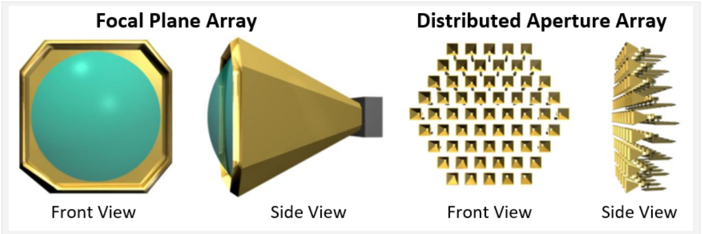
Millimeter waves (mmWs) are electromagnetic signals with frequencies between 30 GHz (10 mm wavelength) and 300 GHz (1 mm wavelength). They are longer in wavelength than infrared and Terahertz signals and shorter than radio waves. Most objects naturally emit weak amounts of millimeter waves much like infrared radiation, or heat. While our eyes cannot “see” this energy, PSI has developed sensitive imaging systems capable of capturing images and videos in the Q–band (33 – 50 GHz) and W-band (75 – 110 GHz) mmW regimes.
While normal visible light is reflected off of most particles and surfaces, millimeter waves are able to pass through many materials like fabric and most building materials, and obscurants such as fog, dust clouds, and smoke. Unlike x-rays, mmWs are completely safe and non-ionizing and can therefore be used to detect both metallic and non-metallic contraband on people.

Atmospheric attenuation in dB/km the mmW spectrum for several atmospheric condition, courtesy of mmW Concepts, LLC.
Imaging systems can be active or passive. An active mmW imager bounces waves off of the scene and images with the reflected energy while a passive system uses the energy naturally emitted by the scene. Emissive objects will emit black-body mmWs in proportion to their temperature. Passive imaging systems can discretely capture images in all weather conditions using the naturally emitted black body mmW radiation given off, or reflected, by objects.

Naturally emitted black body radiation and radiation through 1 km of fog for an emissive object at 77K, 300K, and 6000K
PSI uses a distributed aperture imaging (DAI) approach over a standard focal plane array (FPA). An FPA requires a lens, larger volume, and an expensive mmW detector for each pixel. A DAI system captures the mmW signal field amplitude and phase at discrete points. Since no lens is needed the imager can be flat or conformal and achieve higher resolution without the volumetric scaling of size and weight. In addition, a lower number of expensive millimeter wave components is needed.
